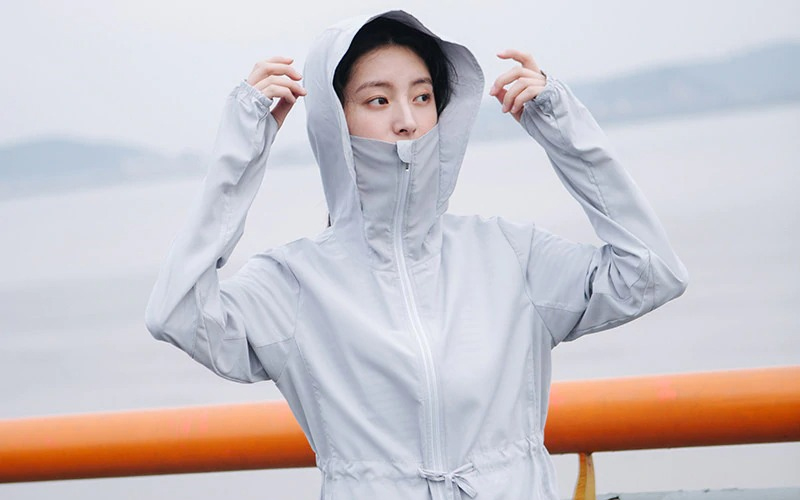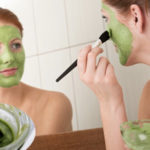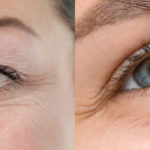While any outfit or fabric can be used to cover and protect the body from the sun as long as it’s modest, this doesn’t guarantee protection from UV rays. To minimize their impact on your skin, consider the following tips.
1. Benefits and drawbacks of wearing sun-protective clothing

Benefits of Sun-Protective Clothing
- Sun-protective clothing is designed with coverage in mind. It offers excellent protection from the sun’s harmful rays.
- Some sun-protective garments are made from UV-protective fabrics that reflect high-radiation sunlight, effectively blocking it from reaching your skin and preventing skin diseases.
- To maximize sun protection, many sun-protective garments feature built-in gloves and high-neck zippers that can be pulled up to cover part of the face, eliminating the need for a mask and providing versatility in various situations.
- In addition to UV-protective fabric, some garments feature ventilation holes for breathability in hot weather and water-resistant fabric to keep you dry during unexpected rain showers.
Drawbacks of Sun-Protective Clothing
- Wearing sun-protective clothing that is too loose or long can be hazardous as it may get caught in the back wheel of a motorcycle or trapped in a kickstand, leading to accidents.
- The very features that offer protection, such as a full-coverage hood and high-neck zipper, can obstruct your vision and mobility, creating a safety hazard.
2. Tips for Wearing Sun-Protective Clothing
 Avoid layering too much sun-protective clothing
Avoid layering too much sun-protective clothing
– When choosing sun-protective outerwear, pay attention to the UPF (Ultraviolet Protection Factor) rating. The higher the UPF, the better the protection—for example, denim has a high UPF.
– Look for garments with a UPF rating of 15-50+ to ensure optimal skin protection. Fabrics like polyester and nylon offer superior UV protection compared to cotton.
– To maintain clear vision for drivers, opt for sun-protective clothing with wide brims that can be worn over a helmet instead of those that cover the entire head.
– Choose sun-protective clothing with a length that’s appropriate for your height to avoid tripping hazards.
– Thicker fabrics like twill or denim are less likely to get caught in wheels compared to softer materials.
– Darker colors absorb more heat but offer superior UV protection.
– Wash your sun-protective clothing regularly (1-2 times per week) to prevent skin infections like dandruff and fungal infections.
 Avoid sharing sun-protective clothing
Avoid sharing sun-protective clothing
– Avoid sharing sun-protective clothing to prevent the spread of skin infections.
While sun protection is essential, it’s crucial to use sun-protective clothing correctly to maximize its benefits without compromising your health and safety.
Women Reveal Their Favorite Green Tea Face Masks
If you want to keep your skin looking healthy and youthful, then you need to know more about the benefits of green tea masks. In this article, we’ll go over the five most popular masks that women rely on to keep their skin looking its best. Get ready to discover the power of green tea and how it can help your skin look and feel its best!
How to Keep Eyes Healthy and Young-Looking: 7 Essential Tips
Do you want to protect the health and beauty of your eyes? Exposure to screens, smoke, and pollutants can cause early aging and contribute to eye-related diseases. Fortunately, there are a variety of ways to care for your eyes from the comfort of your home. Let’s explore some of these techniques in this article.




































